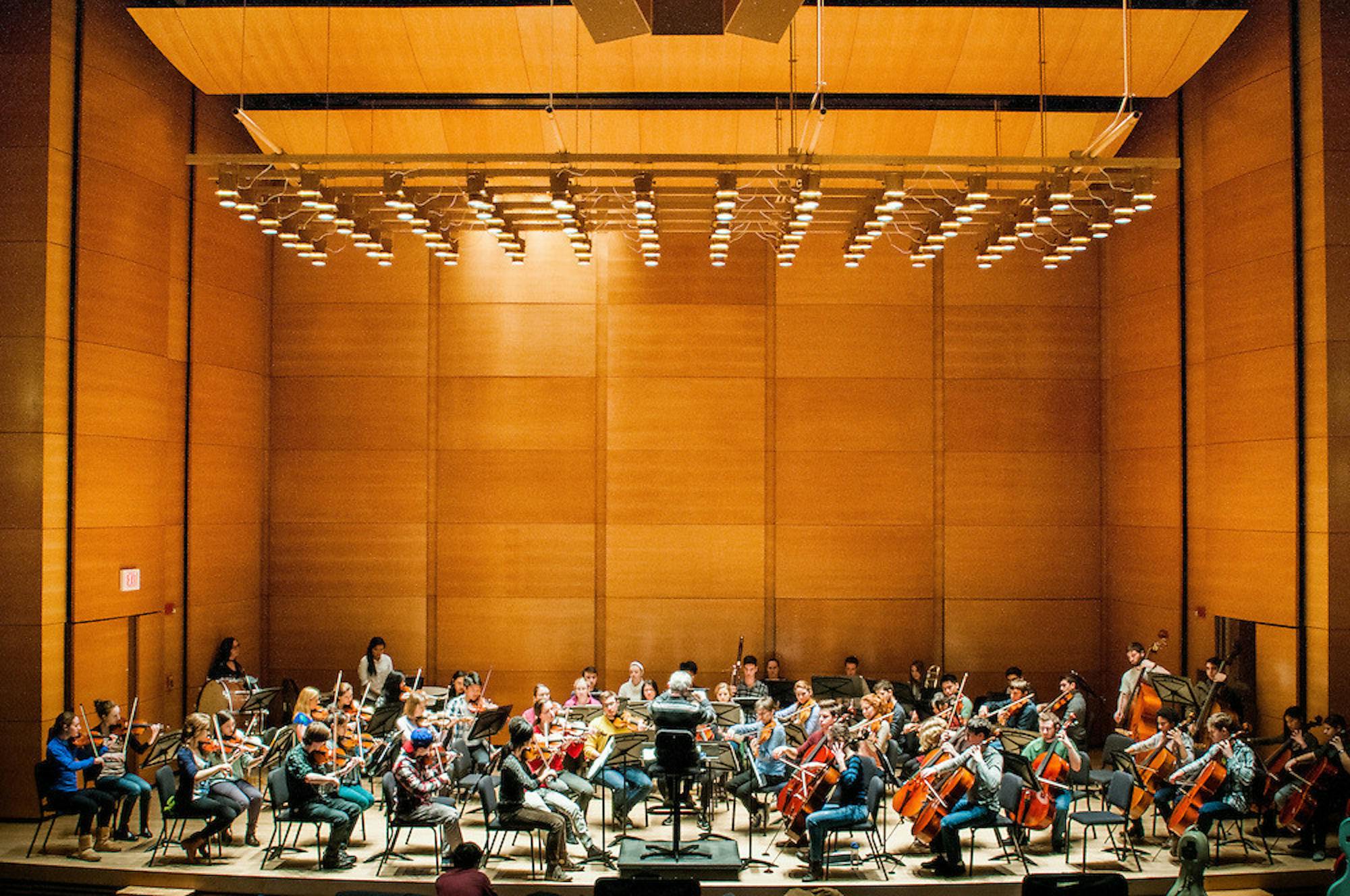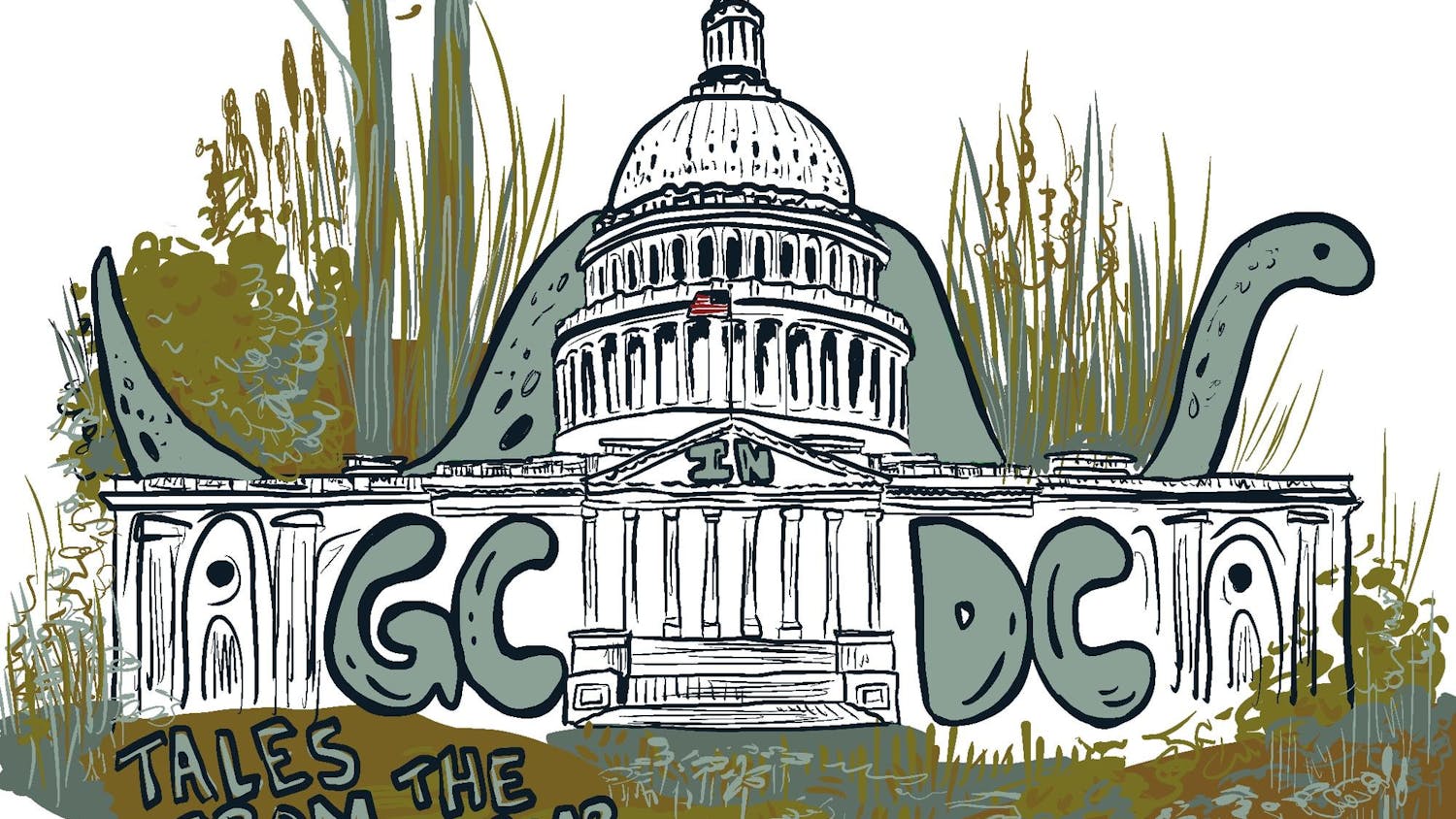For the first time in over a year, all musical ensembles at Tufts University will return to in-person modalities with full participation this semester. Vocalists, winds and brass players, whose participation in ensembles was restricted during the 2020–21 academic year, will be required to wear instrument-specific personal protection equipment; all such PPE will be provided by the Department of Music to any student who wishes to participate in an ensemble or engage in solo practice.
After the university relaxed restrictions on singing, winds and brass performance last spring, students were permitted to practice on campus following specific guidelines. Medical Director of Health Service Marie Caggiano explained how the upcoming semester will be different.
“This fall, the University will permit indoor practices and performances with appropriate, instrument-specific PPE,” Caggiano wrote in an email to the Daily. “There will be no PPE requirements or other COVID-19 restrictions for outdoor practices and performances.”
University Infection Control Health Director Michael Jordan explained that the loosening of restrictions surrounding musical activities were made using data and guidance from local, state and federal authorities.
“Generally, the widespread availability of effective vaccines has enabled us to revise or eliminate many of the restrictions that were in place during the last academic year,” Jordan wrote in an email to the Daily.
The past year was certainly mired in challenges for vocalists and wind and brass players at Tufts, but also filled with innovative solutions on the part of ensemble directors. According to Joel LaRue Smith, senior lecturer and director of the Tufts Jazz Orchestra and jazz activities at Tufts, the Tufts Jazz Orchestra — which typically has a “Big Band” instrumentation of five saxophones, at least four trombones, at least four trumpets, a rhythm section and a vocalist — was greatly reduced in size, as only students playing string instruments, percussion or rhythm section instruments were able to participate.
“[Big Band music] particularly focuses on an instrument that actually wasn't so included in the [symphony] orchestra, which is the saxophone,” Smith said.
With last year’s restrictions, however, Smith said that the students who were able to participate in the Jazz Orchestra were playing a different type of music: the jazz piano trio, which consists of piano, bass and drums.
“We did great music by Mulgrew Miller, Benny Golson, a lot of music from what was called the post bop, or the hard bop, period,” Smith said. “We focused on revolutionary themes from the 60s because it was such a fertile and great period for jazz and America politically.”
Smith, who has always programmed with the Black American experience and the Black Lives Matter movement in mind, will continue to do so next semester as his ensemble returns to its pre-pandemic instrumentation and size.
“Culture and music are the same to me,” Smith said. “I think that it's important that music in the African American experience, in conjunction with everything else, is talked about and displayed through the music.”
Carol Mastrodomenico, director of the opera ensemble at Tufts, was also able to adapt her course curriculum during a period when her students were unable to traditionally participate in opera.
“[In the fall] we did a ‘scenes program,’” Mastrodomenico said. “We did ... any opera that was based on a play, and then we took those plays and did the dialogue instead of singing. And then I played the music from the opera in the transitions when we would change the set.”
In the spring, Mastrodomenico and Opera Ensemble Co-Director Thomas Stumpf directed a video performance modeled off of “The Voice of Firestone” (1928–63), a radio show-turned television program that featured classically trained singers at prime time.
“We took some of the arias and art songs that were sung in ‘Voice of Firestone,’ and we assigned it to the students that had off-campus houses and could sing in them,” Mastrodomenico said.
Both Smith and Mastrodomenico anticipate that enrollment in their ensembles will return to pre-pandemic levels this semester. The music department has already procured over 2,000 PPE units to accommodate anticipated requests.
“My whole job and purpose in existence is to inspire the beauty and the music inside of students, no matter what the situation is,” Smith said. “COVID is not what I would hope for, or what any of us would hope for, but you can bet we're all going to bring out the very best of performance, and each rehearsal has got to be magic and met with zeal, focus and unbending intent.”






